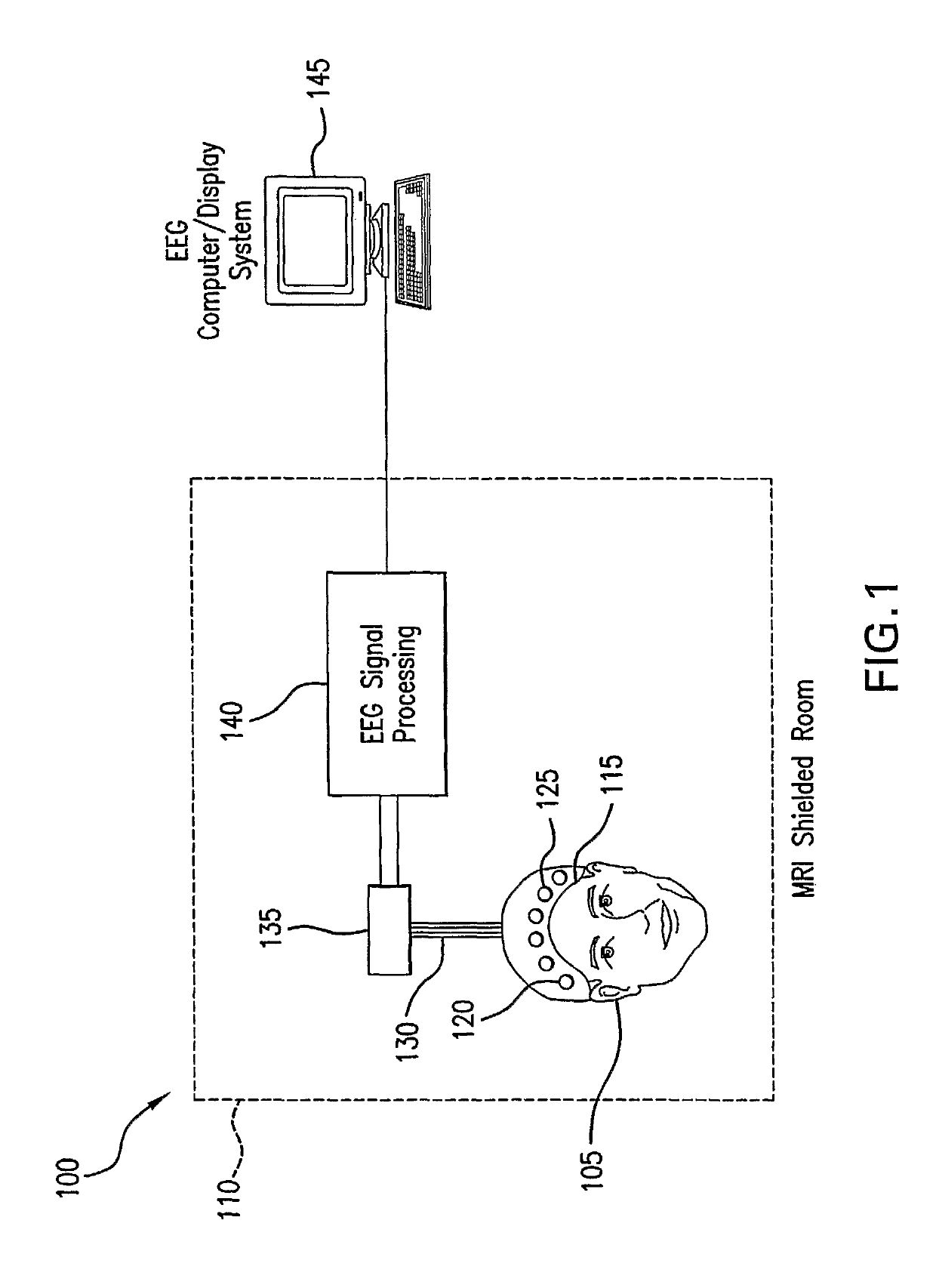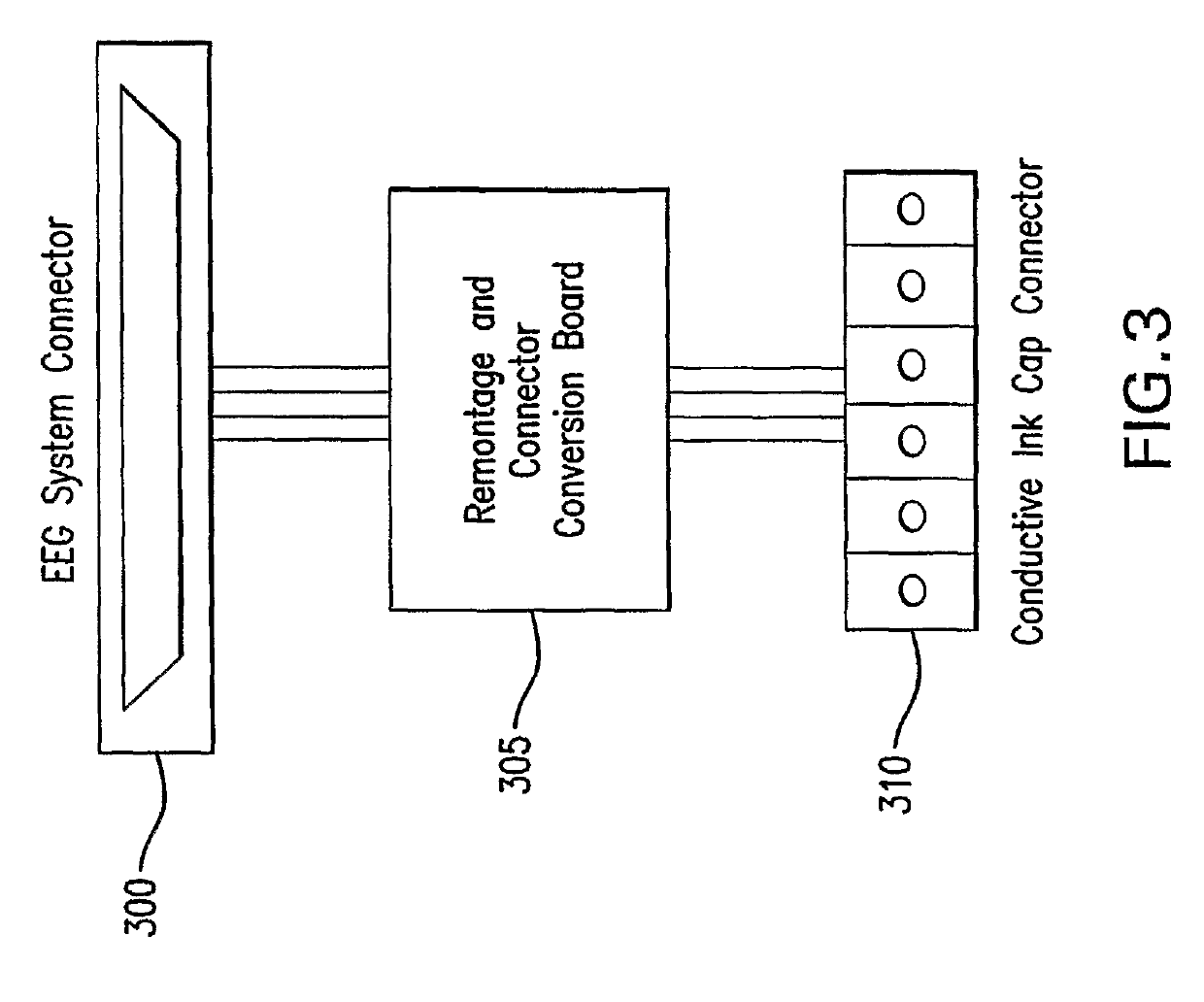Apparatuses and methods for electrophysiological signal delivery and recording during MRI
a technology of electrophysiological signals and apparatus, applied in the field of electrophysiological signal delivery and recording during magnetic resonance imaging, can solve the problems of not providing the spatial resolution used to determine the exact location of the recorded activity in the brain, no brain imaging technology that can provide the resolution needed to study this brain activity, and several safety problems, so as to achieve safe use in high magnetic fields, reduce the effect of sar and temperature increas
- Summary
- Abstract
- Description
- Claims
- Application Information
AI Technical Summary
Benefits of technology
Problems solved by technology
Method used
Image
Examples
Embodiment Construction
[0060]Generally, an exemplary embodiment of the present invention provides methods, systems and arrangements for the delivery and recording of electrophysiological brain signals during MRI. As used herein, electrophysiological brain signals generally refer to signals that record the electrical activity of the brain. These signals may be acquired by an electroencephalogram (“EEG”) machine, e.g., a system that can measure an electrical activity in the brain via a multitude of electrodes coupled to a patient's scalp via a cap, glue, or paste, and electrically coupled to the EEG machine via leads. Signals acquired by the EEG machine may be interchangeably referred to herein as electrophysiological brain signals, EEG signals, or brain waves.
[0061]Electrodes as used herein may preferably include a conductive medium used to record an electrical signal from a patient. A group of electrodes may be attached to a cap which can fit the patient's head so as to acquire the EEG signals in accordan...
PUM
 Login to View More
Login to View More Abstract
Description
Claims
Application Information
 Login to View More
Login to View More - R&D
- Intellectual Property
- Life Sciences
- Materials
- Tech Scout
- Unparalleled Data Quality
- Higher Quality Content
- 60% Fewer Hallucinations
Browse by: Latest US Patents, China's latest patents, Technical Efficacy Thesaurus, Application Domain, Technology Topic, Popular Technical Reports.
© 2025 PatSnap. All rights reserved.Legal|Privacy policy|Modern Slavery Act Transparency Statement|Sitemap|About US| Contact US: help@patsnap.com



